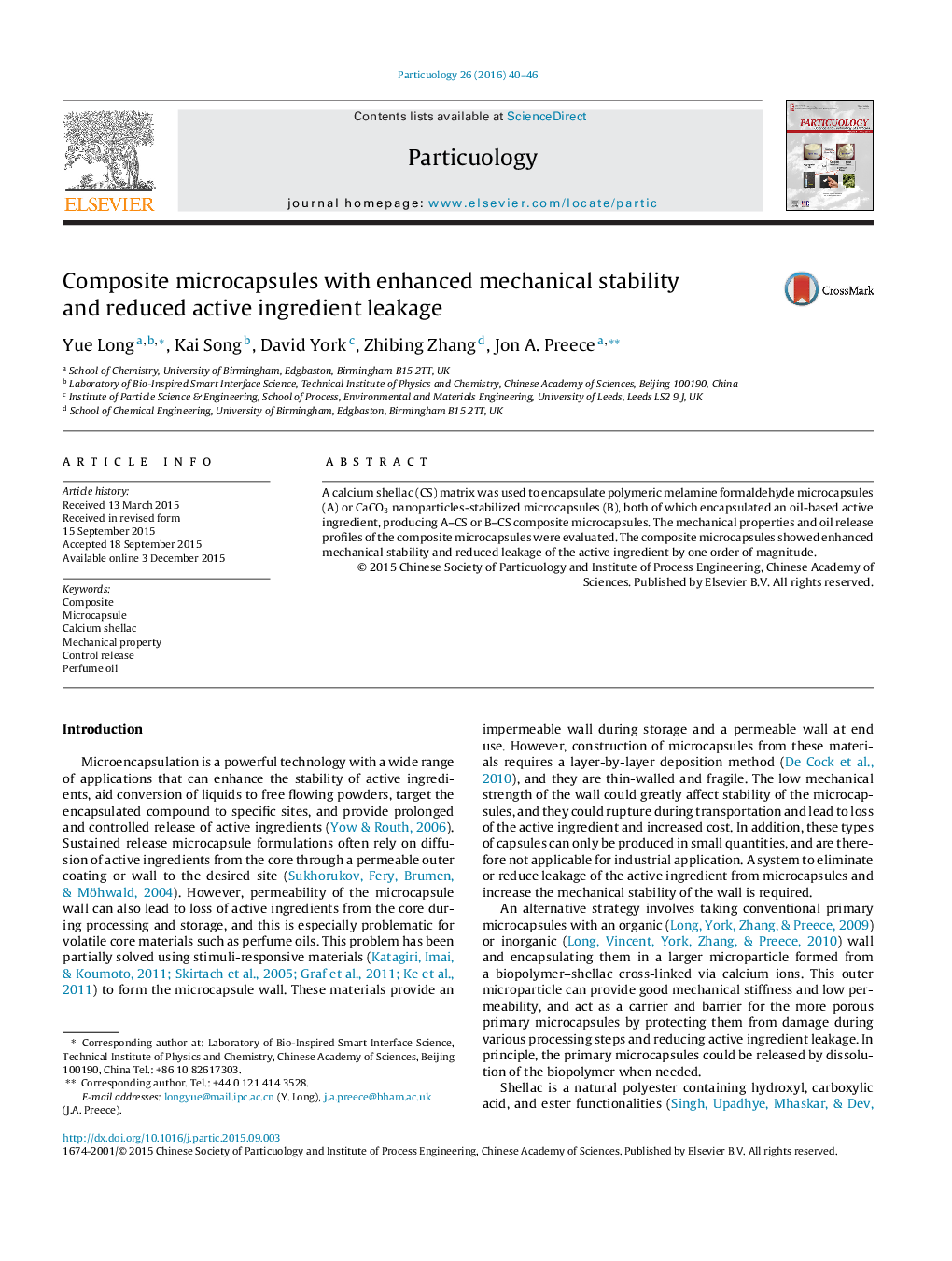| Article ID | Journal | Published Year | Pages | File Type |
|---|---|---|---|---|
| 671724 | Particuology | 2016 | 7 Pages |
•Composite microcapsules were formed by encapsulating primary microcapsules in calcium shellac matrix.•In primary microcapsules oil was encapsulated in melamine formaldehyde or CaCO3 nanoparticle walls.•The composite microcapsules showed enhanced mechanical strength and reduced oil leakage.•Calcium shellac could be an effective barrier to protect the primary microcapsules from rupture.
A calcium shellac (CS) matrix was used to encapsulate polymeric melamine formaldehyde microcapsules (A) or CaCO3 nanoparticles-stabilized microcapsules (B), both of which encapsulated an oil-based active ingredient, producing A–CS or B–CS composite microcapsules. The mechanical properties and oil release profiles of the composite microcapsules were evaluated. The composite microcapsules showed enhanced mechanical stability and reduced leakage of the active ingredient by one order of magnitude.
Graphical abstractFigure optionsDownload full-size imageDownload as PowerPoint slide
